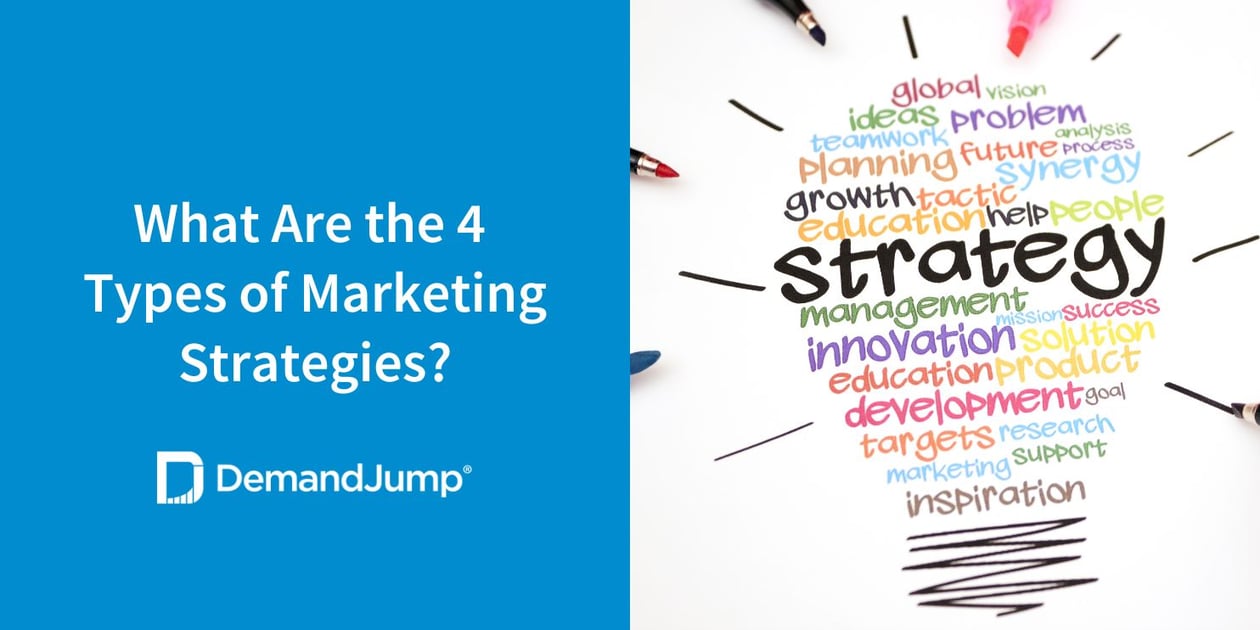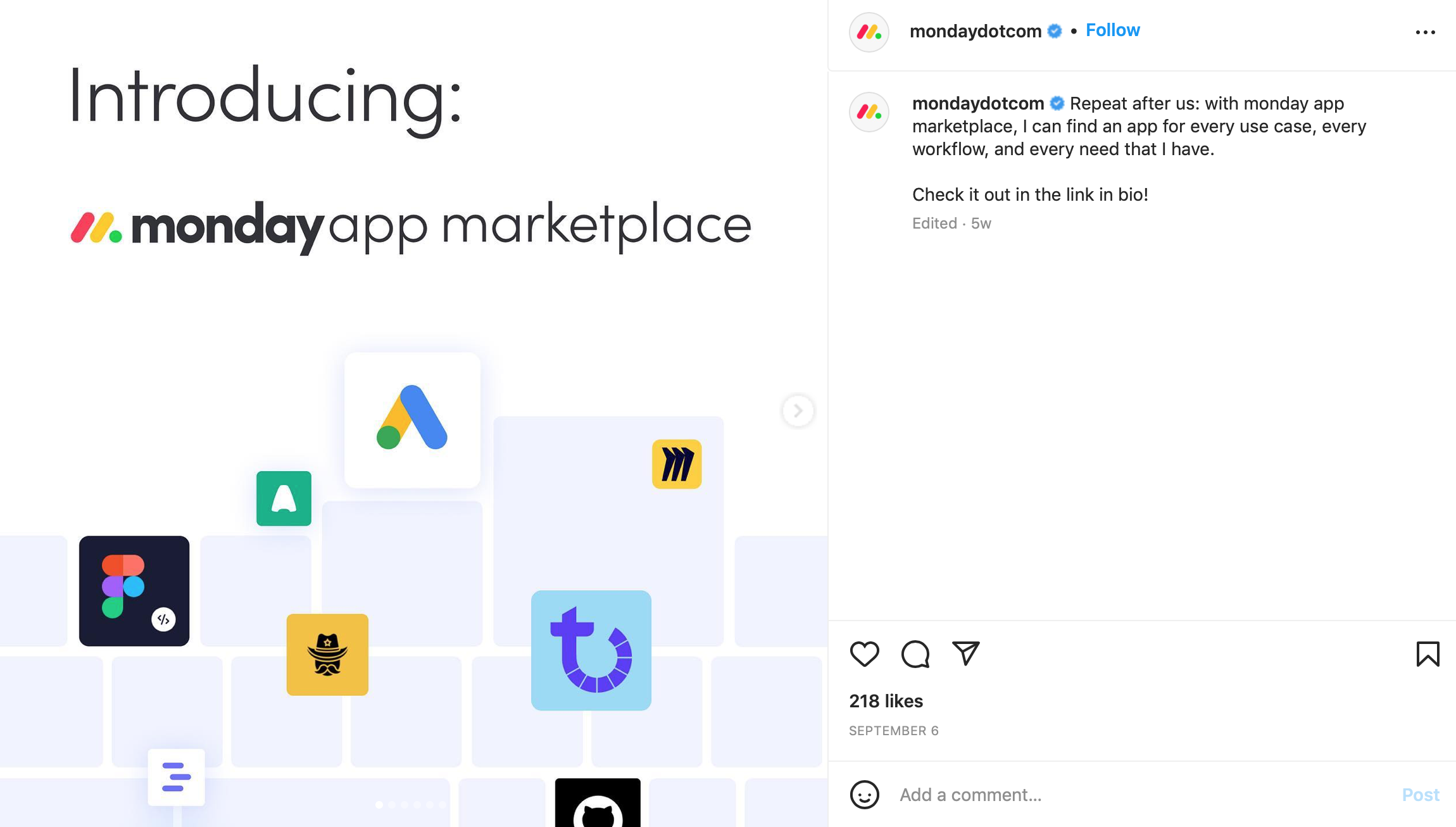What Are the 4 Types of Marketing Strategies?
November 2, 2022 •Chris Gabryszewski

Software as a Service (SaaS) marketing is filled with unique challenges. On the surface, marketing your SaaS offering can seem to follow similar steps as promoting any other product or service. However, SaaS companies need to take these familiar strategies and adapt them to:
- Demonstrate value without a physical product
- Stand out from over 17,000 SaaS companies in the United States alone
- Overcome new customers’ resistance to change—especially when it comes to technology
- Prove value month-to-month and year-to-year to keep existing customers subscribed and active
In this article we’ll cover four effective marketing strategies and how you can use them to cut through the noise. We’ll also take a look at Pillar-Based Marketing (PBM) as a SaaS marketing strategy example that builds your authority as a problem solver and attracts qualified leads.
What Are Marketing Strategies?
A marketing strategy in a business plan is a set of tactics that your team executes to accomplish a specific goal. For example, if one of your goals is to increase brand awareness, you could implement a social media strategy. This strategy could use tactics like posting helpful tips, starting a hashtag to leverage fan generated content, and paying to promote your posts to new audiences.
Marketing strategies fit into two main categories: outbound and inbound. Outbound marketing campaigns require your business to reach out directly to your target audience (think cold calls or email campaigns). On the other hand, inbound marketing campaigns give your audience a reason to reach out to you and start a conversation (think blogs or social media content).
Within these categories, let’s take a look at four different types of marketing strategies with examples:
Outbound Marketing Strategies
The goal of outbound marketing strategies is to connect with a broad audience. Since everyone loves a good fishing metaphor, outbound marketing is trawling with a wide net. You have to do the pulling, and you have less control over which fish end up in your net.
1. Paid Advertising: Paid advertising gets your brand in front of potential leads quickly. Digital advertising platforms—like Google or LinkedIn—have extensive targeting tools, which help you target the audiences that are most likely to convert. For example, you could promote your scheduling software to small business owners in Chicago. With paid advertising, it’s important to make an immediate, positive impression. Take a look at the Wix ad below that promotes their website creation service. With eye-catching imagery, viewers can see how websites continue real world experiences and how you can seamlessly make your site mobile-friendly.
Inbound Marketing Strategies
Inbound marketing strategies put your customers at the center of messaging, not your product. Back to our fishing metaphor, inbound marketing is casting a line with a lure designed for your ideal catch. You might get fewer bites, but the fish that do are more likely to be ones you intended to reel in. And, the fish come out of the seaweed to chase your lure, while you sit on shore.
1. Search Engine Optimization (SEO): Organic SEO content connects you with leads who are experiencing the problems you solve and are currently searching for a solution. By posting organic content that’s designed to educate, not sell—like ultimate guides and how-to blogs—you provide value through information. Then, through a call-to-action, readers can find their way to your website, eshop, or other contact channel. The best part? Once your content is written, it’s out there, and you don’t have to keep paying for the space it occupies.
2. Social Media: Organic social media is a great tool because people choose to see your content when they follow you. That means they’re already interested in what you have to offer. Different platforms allow you to appeal to different audiences—like how LinkedIn can connect you to project managers. You also have a lot of options with what types of content you post. Tips, short videos, graphics, funny photos… choose what communicates your message and fits your brand’s tone. Take the following Instagram post from monday.com as an example. In this post, monday.com is showing how its project management software can integrate with any app a professional needs. This appeals to both new customers who don’t want to commit to something that might become obsolete and existing customers who want flexibility as they add new tools to their tech stack.

Best Marketing Strategies Used by Companies
Out of the above marketing strategies examples, SEO content should almost always be included for its appreciating value and lasting impact.
So, what is the most successful marketing strategy for SaaS companies? Pillar-Based Marketing. PBM takes the benefits of organic content—authority, visibility, and qualified leads—to the next level. By connecting content that speaks to related topics, search engines are more likely to recognize your content. That means your web page ranks higher in search results and gets seen by more people. Approaching SEO with topic clusters also allows you to answer questions from a variety of angles, so searchers will be satisfied when they find solutions to their specific problems. This will build you an authority as a solution provider, which readers will remember once they’re ready to make a purchase.
Supercharge Your Marketing Strategy with Pillar-Based Marketing
As the first and only PBM platform on the market, DemandJump is here to sharpen your competitive edge. Here’s how:
- Topic Insights show you which keywords your audience is searching for and which ones your competitors are ranking for.
- Pillar Strategy Charts allow you to map out all of your related content, so you can ensure each of your pieces is helping the others reach your audience.
- Content Briefs give you high-value keywords to include in each individual piece of content, so you can take out the guesswork and jump into writing.
91% of organic content gets zero traffic on Google. Don’t let your efforts go to waste—know exactly what to write with DemandJump.
Featured Articles
Categories
- Attribution Tracking (13)
- Channel Optimization (11)
- Consumer Insights (68)
- Content Marketing (251)
- Data Science (8)
- Digital Marketing (6)
- Digital Transformation (26)
- Enterprise (10)
- Lead Generation (14)
- Market Intelligence (8)
- Marketing Analytics (39)
- Marketing Attribution (57)
- Marketing Management (153)
- Marketing Operations (86)
- Organic Search (222)
- Paid Search (52)
- Pillar-Based Marketing (63)
- Programmatic Advertising (9)
- SaaS Content (14)
- SaaS Marketing (29)
- Search Marketing (111)
- SEO Keyword Research (28)
- SEO Pillar (18)
- SEO Strategy (46)
- SMB (5)
- Website Content (12)


